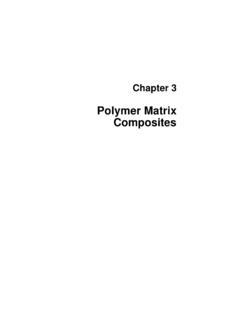Transcription of Drawing Lewis Structures to Determine Molecular Geometry ...
1 Chemical Bonding and Intermolecular Forces 354 Laying the Foundation in Chemistry 10 Chemical Bonding and Intermolecular Forces Drawing Lewis Structures to Determine Molecular Geometry , Hybridization, and Molecular Polarity OBJECTIVE Students will identify characteristics for the three most common types of chemical bonds: ionic, covalent and metallic.
2 Students will learn to draw Lewis Structures and use them to Determine the Molecular Geometry , hybridization and polarity of compounds and polyatomic ions. The concept of intermolecular forces will also be introduced. LEVEL Chemistry NATIONAL STANDARDS , , CONNECTIONS TO AP AP Chemistry: I. Structure of Matter B. Chemical bonding 1. Binding forces a. Types: ionic, covalent, metallic, hydrogen bonding, van der Waals (including London dispersion forces) b. Relationships to states, structure, and properties of matter c.
3 Polarity of bonds 2. Molecular models a. Lewis Structures b. Valence bond: hybridization of orbitals, resonance, sigma and pi bonds c. VSEPR 3. Geometry of molecules and ions AP Biology: I. Molecules and Cells A. Chemistry of Life TIME FRAME 90 minutes class lecture; 45 minutes homework MATERIALS TEACHER NOTES This lesson should precede the Molecular Geometry and the Don t Flip Your Lid activities found in this guide. This lesson equips students with the necessary skills to predict Molecular geometries, hybridizations and Molecular polarity.
4 The students should actively participate as you introduce the different types of bonds and examples of each bond type. For each of your example compounds, be sure to point out each element s placement on the periodic table. Students should be able to deduce a good deal about the type of chemical bond formed within a compound by examining the positions of the periodic table Molecular models TEACHER PAGES 2007 Laying the Foundation, Inc. All rights reserved. Visit: Chemical Bonding and Intermolecular Forces Laying the Foundation in Chemistry 355 elements on the periodic table.
5 If the elements are from opposite sides of the periodic table, the compound tends to be ionic; elements found closer together (most often both nonmetals) tend to form covalent compounds. Students should also have an awareness regarding the strength of bonds. Specifically, that ionic attractions are among the strongest. Students may have questions regarding the strength or hardness of diamond. Diamonds are covalently bonded as a network, which makes them an exception to the general trends in bonding discussed here.
6 Diamonds have very strong directional covalent bonds and are actually grouped into a class known as atomic Molecular solids. Some metals, like iron also have very strong attractions and are therefore very strong while others metals, like mercury, have weaker attractions making it a liquid at room temperature. Examples for types of compounds: Ionic: table salt, sodium chloride, NaCl; baking soda, sodium bicarbonate, NaHCO3; copper(II) sulfate, CuSO4 (available at hardware stores as a root killer); lye, sodium hydroxide, NaOH (available at hardware stores) Covalent: table sugar, sucrose, C12H22O11; ammonia, NH3; water, H2O; any plastic material (long hydrocarbon chains) Metallic: aluminum foil, Al; gold, Au; silver, Ag.
7 Lead, Pb (point out that pencil lead is not Pb but is really graphite , carbon, C) Lewis Structures and Molecular Geometries When discussing Lewis Structures , be sure to continually refer to the periodic table and point out that the Roman numeral at the head of each column for the main group (representative) elements is in fact the number of valence electrons. Demonstrate the regions of electron density on the chalkboard, overhead or with models so that students have a concrete understanding of this concept.
8 Remember that a region of electron density may consist of a bond or lone pair and that double and triple bonds count as only one region of electron density. Molecular models representing each type of Molecular Geometry mentioned in the notes should be prepared ahead of time. Students benefit from seeing the models before being asked to construct their own. Molecular model kits may be purchased from any science supply company or may be constructed using gumdrops and toothpicks as in the Molecular Geometry activity found in this guide.
9 The advantage to the purchased model sets is that bond angles are pre-established and correct. Intermolecular attractive forces: IMF s Dipole-dipole forces of attraction between polar molecules. Polar molecules are those which have an uneven charge distribution. Hydrochloric acid molecules are held to each other by this type of force. HCl the chlorine pulls the electrons in the bond with greater force than hydrogen so the molecule is polar in terms of electron distribution. Two neighboring HCl molecules will align their oppositely charged ends and attract one another.
10 TEACHER PAGES 2007 Laying the Foundation, Inc. All rights reserved. Visit: Bonding and Intermolecular Forces 356 Laying the Foundation in Chemistry 10 Hydrogen bonds strongest IMF exist between H and an unshared electron pair on F, O, or N. The IMF s give rise to many unique properties . As a result of these attractions, water has a high boiling point, high specific heat, and many other unusual properties .

